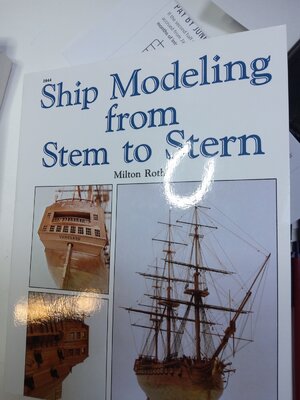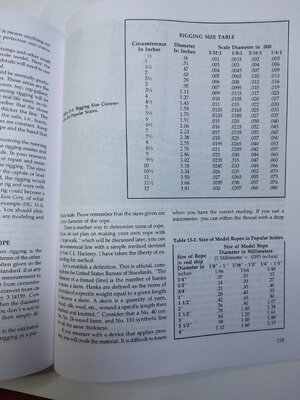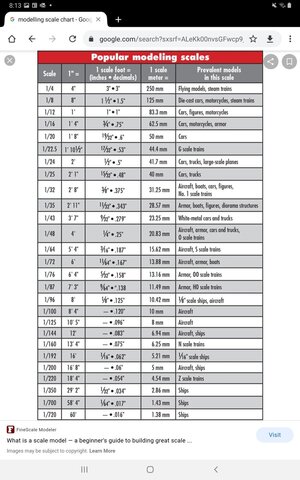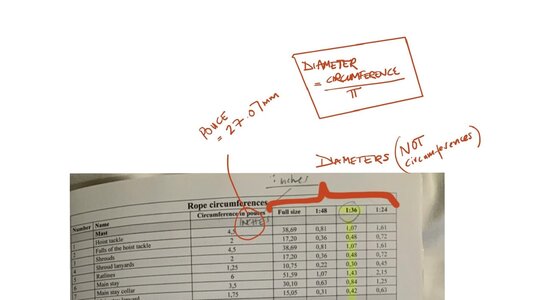Hi
I’m scratch building Le Rochefort 1787 to 1/36 scale following Adrian Sorolla’s instruction book. I’m looking at the recommended rope sizes for this scale ship, 1/36.
See photos attached.
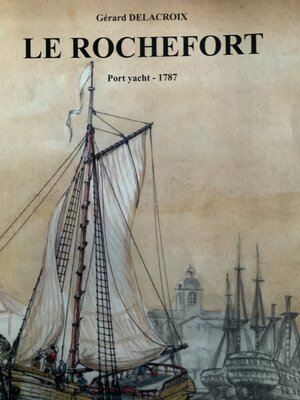
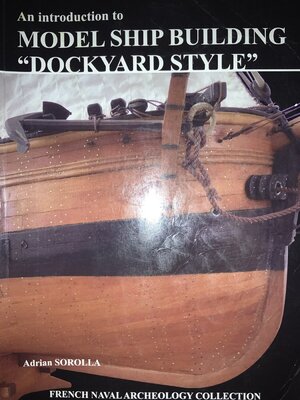
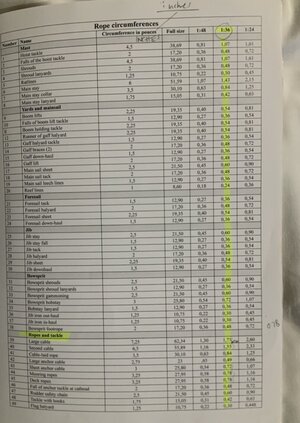
Under 1/36 scale the rope circumferences are given I think.
Question
Do I need to source all the different sizes as specified?
What colour ropes do I need? Which would be Black? which would be Tan?
I’m confused as to the reference to the ‘pouches’ inches in English I think. Take the first line giving the recommended size for the Hoist Tackle as 4,5 pouches, inches?
4.5 inches is 114.3mm
114.3mm at 1/36 scale is 3.17mm i think?
At 1/36 scale its given as 1.07mm??
Am I being stupid??
I’m scratch building Le Rochefort 1787 to 1/36 scale following Adrian Sorolla’s instruction book. I’m looking at the recommended rope sizes for this scale ship, 1/36.
See photos attached.



Under 1/36 scale the rope circumferences are given I think.
Question
Do I need to source all the different sizes as specified?
What colour ropes do I need? Which would be Black? which would be Tan?
I’m confused as to the reference to the ‘pouches’ inches in English I think. Take the first line giving the recommended size for the Hoist Tackle as 4,5 pouches, inches?
4.5 inches is 114.3mm
114.3mm at 1/36 scale is 3.17mm i think?
At 1/36 scale its given as 1.07mm??
Am I being stupid??







